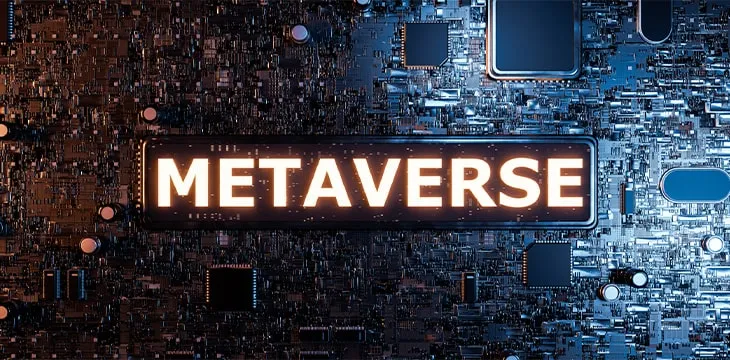|
Getting your Trinity Audio player ready...
|
With all the NFT news abound in the market today, it is hard to see what makes any of these things worth what some people are paying for them. Especially as most of the NFTs presently available are nothing more than mediocre digital art1 or simply a digital token representing real-world assets that could use the benefit of liquidity that having a token tradable on peer-to-peer exchange brings. But to think that this is the extent of the possible innovations with NFTs is myopic. In fact, the most interesting applications of NFTs have yet to be explored. But to understand what these value propositions are for NFTs, let’s look first at their origins.
Simply put, NFTs are non-fungible tokens. That is to say, each token is unique, and to have a unique token means that it can represent a unique asset in the real world, or embody a unique digital asset, for example, some computer-generated artwork. But the bigger potential use of digitally unique tokens is to represent digital entities or agents.
What is a digital agent? Quite simply, it is an entity, or an actor, which exists in a digital environment, or a game. A simple example of this is a player character in a role-playing game. Take any character in a game, although all characters may start out the same in the game world, as the play progresses with each unique player, through the choices that each player makes their character will become unique, both through its statistics, appearance, its history, and the equipment that it has gathered. These things make each character unique and, therefore, a good match for NFTs.
Take a popular RPG game like Bioware’s Mass Effect. Even though the game’s endings may be the same, the characters that a certain player develops by playing through the game will be different from another person who plays through the same game. One of the engaging features of the series of games was that the characters that were developed in it would be preserved and carried over to the next game. This gives the player a sense of continuity and the feeling that the characters actually ‘exist,’ albeit in the game universe.
This is the promise of NFTs, with their ability to give persistence and existence to digital agents like the characters in RPGs means that they can continue to live outside their original game world, much like how the characters in Disney’s “Wreck-it Ralph” movies do. The NFT token gives virtual entities a reference and a name outside the confines of their native application.
The key to understanding the value of NFT agents is understanding that it is the history and past record of the agents which give it value, not just the present statistics and equipment that it may own. In this way, NFT agents are very much like digital people or legal entities. They have their own agency. These new types of NFTs will be valued based on their digital provenance and associated historical metadata records. We can imagine a future where a certain character played by someone famous would be more valuable on the secondary markets than the one you just created.
This new breed of NFT would be the merging of the two types of NFT tokens today, half a collectible (presently manifested in unique art) and the other half its digital provenance, namely where it comes from, its history, its past.
It is on this form of NFT, digital agents with their own sovereignty and autonomy which are the most interesting in terms of technology to be developed in games. Imagine game characters which, after players have completed the game, can be sold on the market, or for games where the creation of digital assets like spaceships is part of the game (such as EVE Online).
Imagine trading assets that you have spent a long time creating in the game on the secondary market. But not only would the item be just a ‘play booster’ for the buyer, but the record of all the previous owners would stay with the virtual item or vehicle or character. The older the vehicle becomes, the more it stands to reason the more valuable it will become. Unlike real-life cars, which certainly get more expensive the older they are as long as they are maintained in working order, virtual vehicles do not require maintenance. The value of the asset is based solely on its age and the length of ownership history and improvements that it can prove.
For those who would like a concrete analogy in the real world, think of the wine market. It captures the notion that the older something is, the more valuable it becomes. With vintage wine, provenance is an essential matter, as sometimes, who has possessed a particular bottle in the past is just as important as the vintage and year of the wine itself. All that is needed is a common, cheap to use public blockchain platform to store and track all trades of bottles and batches produced so that the record of the chain of custody of the bottle or crate can be verified. As any wine collector can attest to, verification of this provenance information is extremely important, as you often do not have the luxury to just pop the cork to taste it to check for yourself.
With the proper use of NFTs, digital agents, game characters, and other digital assets curated and developed in games can finally exist outside of the game. And it’s up to game developers to start thinking about how to deal with game assets from other games appearing in their own games. All that is needed is a common substrate in which all digital agent references, data, identifiers, and information can be shared. The substrate layer that is best suited for this, due to its cheap per TXN costs and unlimited data limits presently, is BSV.
What we see here is the birth of the Metaverse. Best described as the “Oasis” in the movie Ready Player One, it is a digital universe of connected game worlds. Items in one game world start to have functionality in other worlds. How all of these connected worlds will grow together in this evermore connected universe is still yet to be seen. Still, one thing is for sure, it will happen, and the forces of the free market and free creativity of digital assets having life and utility outside of their original design are essential to it all. But to start, we have to have a way for digital assets to have a ‘shared existence’ outside of their created game worlds. A substrate or dimension to exist in. That substrate is as an NFT on a public blockchain.
/Jerry Chan
***
NOTE:
[1] Worth noting that historically real-world money laundering was done through antique and art shops, as the valuation of art is questionable, subjective, and hard to rationalize.
Watch: CoinGeek New York panel, The New World of NFTs

 06-30-2025
06-30-2025 





